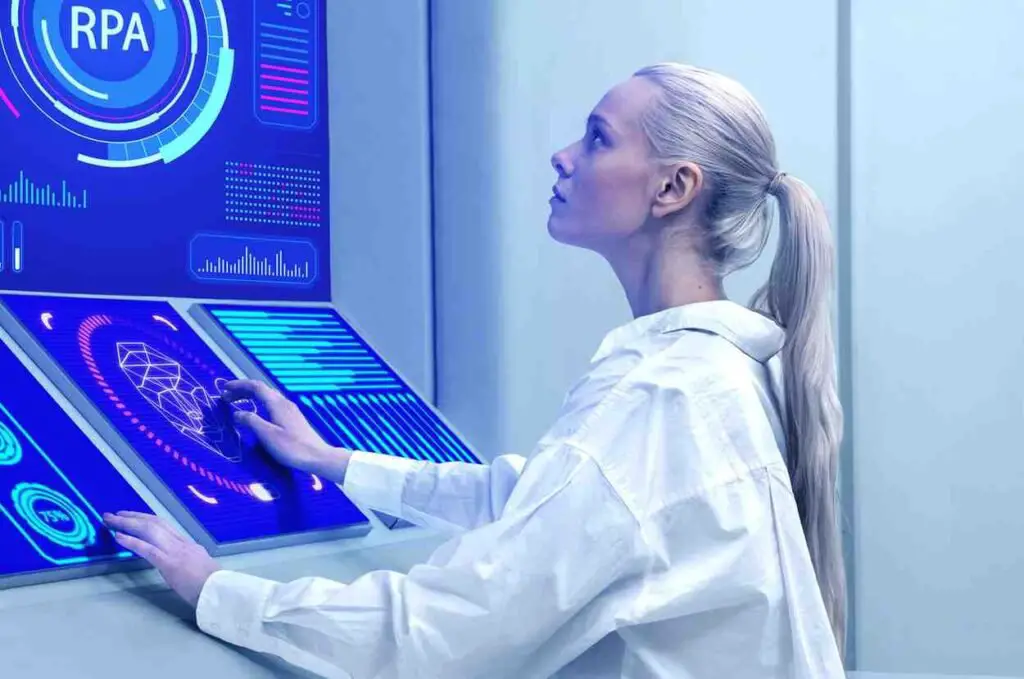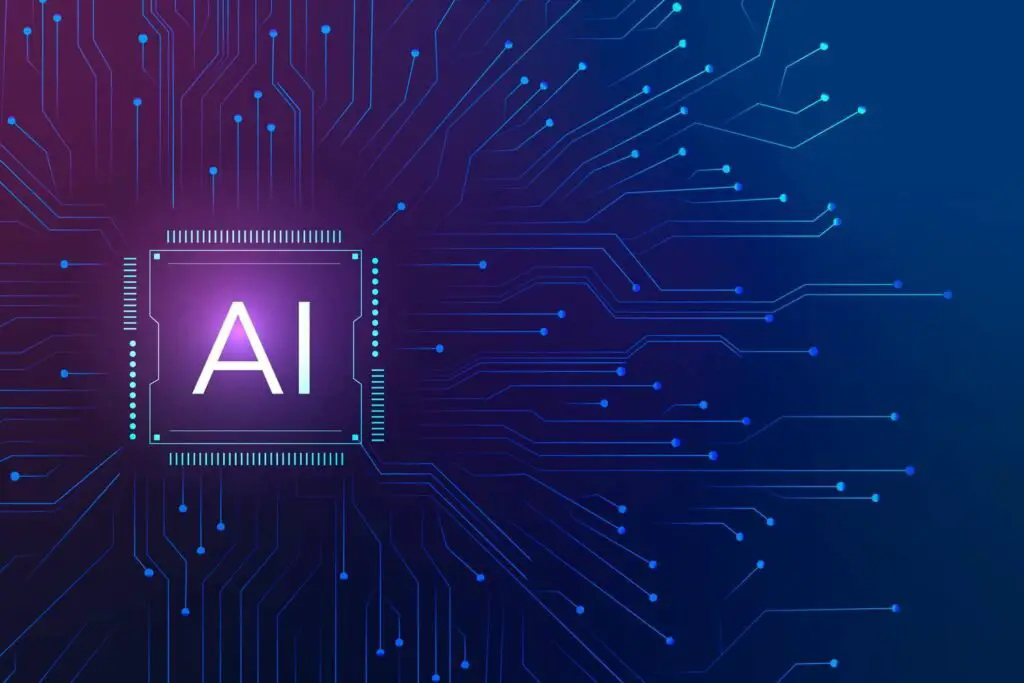Generative AI has made huge strides in technology. From writing essays to creating images and coding computer programs, AI systems are revolutionizing many industries. But with these advancements comes a pressing question: Why is controlling the output of generative AI systems important? The answer is simple—Controlling the output of generative AI systems is essential because, without regulation, AI can produce biased, offensive, or even harmful content. In this article, we’ll explore why it’s so crucial to control AI, how to do it effectively, and what challenges lie ahead.
Understanding Generative AI
Let’s break it down. Generative AI refers to AI systems that can create new content, whether it’s text, images, music, or even computer programs. These systems are trained on massive datasets known as training data, which enable them to learn patterns and generate content that mimics human creativity. What is the main goal of generative AI? It’s pretty straightforward—to create content that feels like humans make it.
You might like reading on How to Add Images in Janitor AI?
For example, think of tools like OpenAI’s GPT models, which can generate essays or code, or DALL-E, which creates images from text prompts. These systems can be incredibly useful. However, the quality of the generated content is directly tied to the quality of the data they are trained on. If the data contains biases or inaccuracies, the AI will reflect those flaws in its outputs.
Why Do We Need to Control AI?

The idea of controlling the output of AI might sound limiting, but it’s absolutely necessary. Why do we need to control AI? Because without control, the generated content can go very wrong. Here are the major pain points:
1. Misinformation
One of the biggest risks of uncontrolled AI is its potential to spread misinformation. Since AI systems can generate large volumes of content quickly, there’s a real danger of inaccurate or misleading information being widely disseminated. Imagine an AI system generating a fake news article or a false report—this could have serious consequences.
2. Bias
AI systems learn from the data they are trained on, which can contain biases—consciously or unconsciously. This means that if biased data goes unchecked, the generated content will be biased too. For instance, if AI is trained on biased hiring data, it may reject candidates from underrepresented groups, perpetuating unfair outcomes.
Addressing one challenge in ensuring fairness in generative AI is removing bias from training data. But it’s a tough task. Human biases are hard to remove, and the data used for training AI often reflects real-world inequities.
3. Harmful or Offensive Content
AI can also generate harmful or offensive content. Without proper safeguards, generative AI could produce language or images that are culturally insensitive, explicit, or dangerous. This is why having an ethical control system in place is crucial.
4. Legal Issues
When AI generates content similar to or based on copyrighted materials, it can violate intellectual property rights. Imagine an AI system unintentionally recreating a copyrighted song or image. This would put both the user and the creators of the AI at risk of lawsuits.
The question becomes, why is it important to combine responsible AI with generative AI? Responsible AI incorporates ethical guidelines and legal compliance into the core of its functionality. Without these measures, generative AI could create content that violates laws or societal norms.
Don’t miss out on, Automated Intelligence Vs. Artificial Intelligence| Which is Smarter?
What is The Importance of Intelligent Control Systems
To tackle these challenges, we need intelligent control systems that can monitor and regulate automated AI outputs. These systems act as a safety net, ensuring that AI behaves in ways that align with societal values and legal standards. What is the importance of intelligent control systems?
Here’s what they can do:
- Filter Training Data: Before AI even begins learning, we can pre-filter its training data to remove any biased, outdated, or harmful information. This step is key in producing high quality outputs.
- Monitor Outputs in Real-Time: AI systems can be designed to have real-time content moderation. For example, if a generative AI system is creating text, it can be programmed to flag or remove problematic content as it is generated.
- Post-Processing Oversight: Human reviewers can also play a role in AI control. After the AI generates content, humans can evaluate the outputs to ensure they meet ethical and legal standards. This is especially important in sensitive fields like healthcare or law, where accuracy is critical.
Related Janitor AI: The Revolutionary Tool You Didn’t Know You Needed!
Methods for Controlling the Output of Generative AI

Now, If you are all aware of why is controlling output of generative AI important, let’s break down the methods for doing so. To control AI effectively, there are a few strategies that experts recommend:
Pre-Training Filters
Before an AI system even begins learning, it’s important to filter the training data. This ensures that the system only learns from diverse, accurate, and non-biased sources. If we feed the AI biased data, it will generate biased outputs.
Post-Processing Moderation
After the AI generates content, it should go through a review process—either by other AI systems or humans. This step is crucial to ensure that the content meets the required ethical and legal standards. For example, OpenAI has a team dedicated to moderating the outputs of its language models, ensuring that harmful or offensive content is filtered out before it reaches users.
User Responsibility
AI isn’t a tool that operates in a vacuum. Users also play a role in controlling the output. By giving AI ethical and clear prompts, users can guide the AI toward creating responsible content. For example, a user who prompts AI with offensive or misleading questions can lead to harmful outputs. So, educating users on how to interact with AI responsibly is another layer of control.
The Risks of Uncontrolled Generative AI
If we don’t control AI, the risks are significant. Why is controlling output of generative AI important? Here are a few major risks:
1. Deepfakes
AI systems can generate incredibly realistic fake images or videos, known as deepfakes. These can be used to spread misinformation or manipulate people. For instance, deepfakes have been used in political campaigns to make candidates appear to say things they never said. Without control, AI systems could generate more of these dangerous fakes.
2. Biased Decision-Making
In fields like hiring, loan approvals, or even healthcare, AI is increasingly being used to make decisions. If these systems aren’t controlled, they can reproduce biases from their training data, leading to discriminatory outcomes. This is especially dangerous in areas that affect people’s lives and livelihoods.
3. Legal Liability
As mentioned earlier, AI can unintentionally generate content that violates copyright laws. This could result in financial penalties or even lawsuits for businesses that use AI to generate content without proper oversight.
See Which AI Tool Creates Most Realistic Pets!
But the problem goes beyond just legal issues. Imagine an AI system creating content that amplifies harmful stereotypes or spreads misinformation. The lack of ethical boundaries could lead to even more serious consequences. Why is it important to combine responsible AI with generative AI? While generative AI offers impressive creative potential, it also has the power to cross ethical lines if left unchecked. Balancing AI’s creativity with responsible guidelines ensures that we enjoy the benefits of AI without falling into legal or ethical traps.
Challenges in Controlling AI Outputs
While controlling AI is crucial, it isn’t without challenges. One of the biggest issues is the speed at which AI is evolving. Legal systems and ethical guidelines are struggling to keep up. This is why controlling the output of generative AI systems is important—we need to ensure AI doesn’t produce harmful, biased, or misleading content that can outpace regulations.
Another challenge is related to cultural differences. What is one challenge in ensuring fairness in generative AI? Fairness is subjective. What is considered fair in one culture might not be the same in another. AI systems that are deployed globally need to account for these differences, which adds complexity to their design.
The Future of Controlled Generative AI
Looking ahead, the need for controlling Artificial Intelligence will only grow. The rise of AI in various industries—from content creation to autonomous driving—means that the risks of AI are becoming more significant.
Why is it important to combine responsible AI with generative AI? Responsible AI helps ensure that we can enjoy the innovations of AI without the downsides. As technology advances, we will see more intelligent control systems that automatically moderate and improve AI outputs in real time. Additionally, stronger legal frameworks will emerge to regulate AI use, especially in high-stakes industries like healthcare and finance.
Wrapping Up
As AI systems become more advanced and integrated into our daily lives, the need to control their outputs becomes increasingly crucial. Now, you might be clear about why is controlling the output of generative AI systems important. Without proper regulation, AI can produce biased, harmful, or legally questionable content. By combining responsible AI with innovative generative models, we can harness the power of AI while mitigating its risks.
Frequently Asked Questions
How does generative AI create biased content?
Generative AI models learn from large datasets, and if these datasets contain biased or incomplete information, the AI can replicate and amplify those biases in its outputs. This can lead to unfair decisions or content that reflects societal inequalities.
What are deepfakes, and why are they a concern in generative AI?
Deepfakes are highly realistic fake images or videos generated by AI that can manipulate people or spread false information. They pose significant risks in areas such as politics, media, and social platforms, making controlling AI-generated content vital to avoiding misuse.
How can we ensure fairness in generative AI outputs?
Fairness can be achieved by filtering the training data, using diverse and accurate sources, and implementing real-time moderation systems. Human oversight and post-processing reviews are also critical in ensuring that the AI-generated content meets ethical and legal standards.
What are the challenges in regulating generative AI systems?
One major challenge is the rapid pace of AI development, which often outstrips legal and ethical guidelines. Additionally, fairness can be subjective across cultures, and global AI systems need to be designed to account for these cultural differences while maintaining consistency in responsible AI practices.



